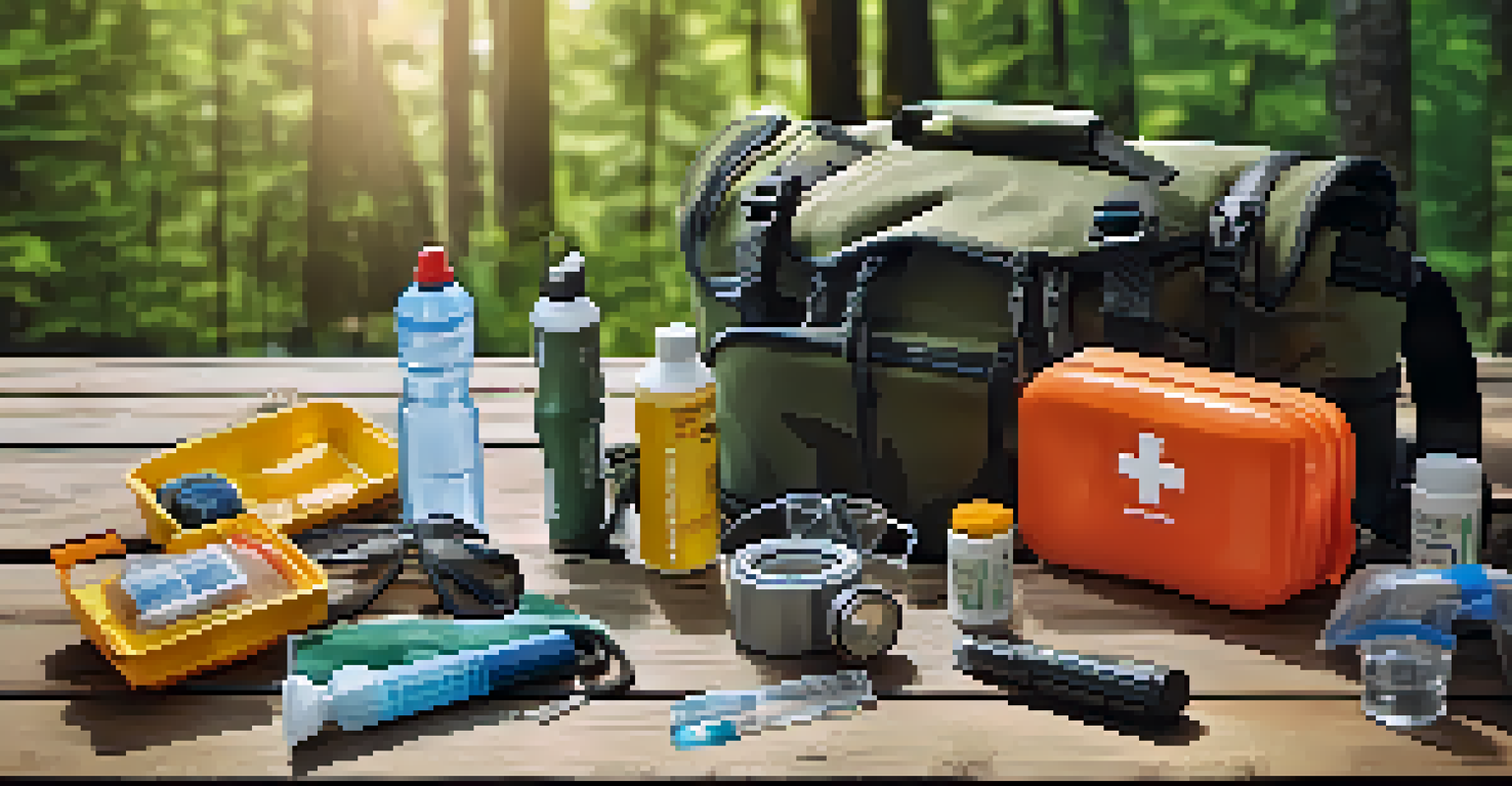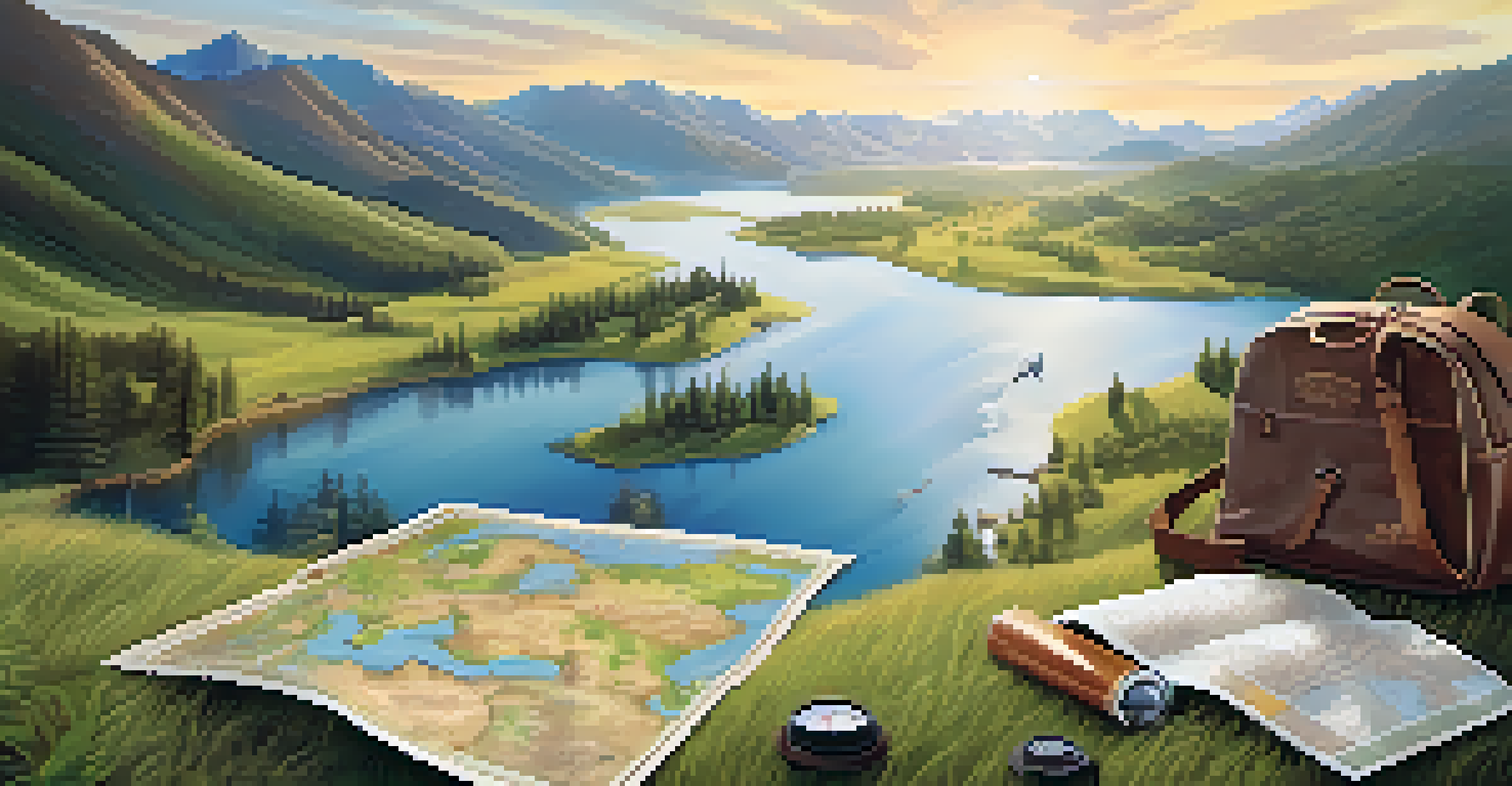Creating a Personal Safety Plan for Outdoor Excursions

Understanding the Importance of a Safety Plan
When heading into the great outdoors, safety should always be a top priority. A personal safety plan acts as your roadmap, guiding you through potential risks and ensuring you're prepared for the unexpected. Just like you wouldn’t set out on a road trip without a map, you shouldn’t embark on an outdoor excursion without a well-thought-out safety strategy.
Safety isn't just a slogan, it's a way of life.
This plan not only helps in keeping you safe but also provides peace of mind, allowing you to focus on enjoying your adventure. Consider it your safety net — a set of precautions that can help you navigate through various situations, from minor mishaps to emergencies. Having a proactive approach can make all the difference in an outdoor setting.
Moreover, a personal safety plan fosters a sense of responsibility, not just for yourself, but for those you’re with. By being prepared, you contribute to a safer environment for everyone involved. So, let’s dive into how to create this essential tool for your next outdoor adventure.
Assessing Your Environment and Activity
The first step in crafting a personal safety plan is to assess the environment where you’ll be adventuring. Are you hiking in a dense forest, kayaking on a river, or camping in the mountains? Each setting comes with its unique challenges and hazards, so it's crucial to understand what you might encounter.

For example, if you're planning a hike, consider the terrain, weather conditions, and wildlife in the area. This knowledge will help you prepare adequately, whether it’s packing the right gear, knowing the local wildlife, or checking weather forecasts. It’s like studying a map before you start your journey; the more you know, the better you can navigate.
Create a Comprehensive Safety Plan
A personal safety plan is essential for preparing for potential risks during outdoor adventures.
Additionally, understanding the activity you’ll be doing is equally important. Different sports or outdoor activities require different safety precautions, and being aware of these can help prevent accidents. By tailoring your plan to your specific environment and activity, you set the stage for a safer outing.
Packing Essential Safety Gear
Packing the right gear is a fundamental part of any personal safety plan. Depending on your activity, this could range from basic first-aid kits to specialized equipment like helmets or life jackets. Think of your gear as your safety toolkit; each item has a purpose and can be a lifesaver in a pinch.
By failing to prepare, you are preparing to fail.
For instance, if you’re going on a long hike, you should include items like a whistle, flashlight, and extra food and water. These essentials can help in case of an emergency where you might need to signal for help or sustain yourself. It's a good practice to regularly check your gear to ensure everything is functional and up-to-date.
Don’t forget personal items that cater to your specific needs, such as medications or insect repellent. By being thorough in your packing, you enhance your ability to handle various situations that could arise during your outdoor excursion.
Communicating Your Plans to Others
Communication is key when it comes to personal safety, especially in outdoor settings. Before you head out, it’s essential to let someone know your plans — where you’re going, who you’re with, and when you expect to return. This way, if something goes awry, someone will be aware of your whereabouts.
Think of it as leaving breadcrumbs for your loved ones; these small pieces of information can lead them to you if they need to act quickly. You might also consider setting check-in times, especially if you're venturing into remote areas. This additional step can provide peace of mind for both you and your friends or family.
Pack Essential Safety Gear
Having the right gear, such as first-aid kits and appropriate equipment, is crucial for handling emergencies.
Moreover, consider sharing your route or using location-sharing apps. This modern twist on communication can enhance safety, making it easier for others to track your journey. The more people are informed, the better equipped they are to help in a crisis.
Knowing Emergency Contacts and Resources
In any safety plan, knowing who to contact in case of an emergency is vital. Make a list of emergency contacts, including local authorities, park rangers, or search and rescue services. Just like having a fire extinguisher in your home, knowing who to call can make a significant difference when seconds count.
It’s also wise to familiarize yourself with the resources available in the area you’ll be exploring. This could include nearby hospitals, ranger stations, or even local community centers. Having this information at hand can save precious time and ensure you get the help you need without delay.
To make it easier, consider storing these contacts in your phone and carrying a physical copy, just in case your device fails. This proactive approach to emergency planning can provide you with a solid safety net as you set out on your adventures.
Practicing Basic Outdoor Survival Skills
Having a personal safety plan isn't just about preparation; it's also about knowing how to react in various situations. Taking the time to learn basic outdoor survival skills can be incredibly beneficial. Think of it as building your own toolbox of knowledge that you can carry with you into the wilderness.
Skills like creating a shelter, building a fire, or purifying water can be lifesavers in the right circumstances. You don’t have to be a wilderness expert, but having a few essential techniques in your back pocket can boost your confidence and preparedness. Just like learning to ride a bike, practice makes perfect — so consider taking a class or practicing these skills in a safe environment.
Communicate Your Plans Effectively
Informing someone about your plans and sharing your route enhances safety and helps others assist in case of an emergency.
Additionally, the more familiar you are with these skills, the better you'll handle unexpected challenges. In the end, being equipped with knowledge can be just as critical as having the right gear. Embrace the learning process, and you’ll feel more empowered as you venture outdoors.
Reflecting on Your Experiences for Improvement
After your outdoor excursion, take some time to reflect on your experience. What went well? What challenges did you face? This reflection is crucial for honing your personal safety plan and making necessary adjustments. Think of it as a post-game analysis; understanding your performance can help you improve for next time.
It’s also beneficial to share your experiences with fellow outdoor enthusiasts. They might offer insights or suggestions that could enhance your plan. Engaging in conversations about safety not only helps your growth but can also contribute to a community of well-informed adventurers.

Moreover, keeping a journal of your outdoor experiences can be a valuable resource. Over time, you’ll develop a comprehensive guide that reflects your journey and growth, making your future outings safer and more enjoyable.